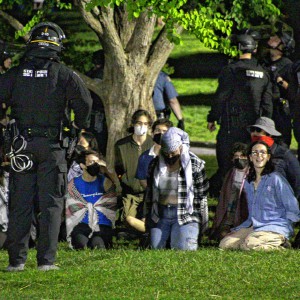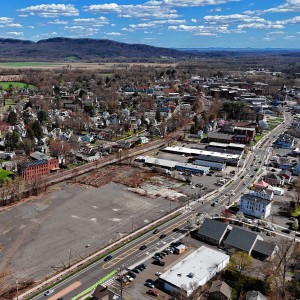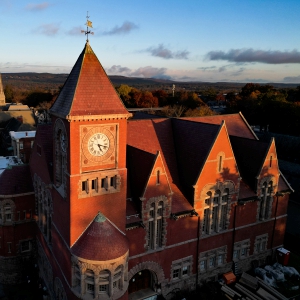Columnist Richard Fein: Israel/Hamas War: Israeli trauma, Palestinian catastrophe

Richard Fein FILE PHOTO
| Published: 01-21-2024 7:01 PM |
Gaza’s civilian population: Hamas has ruled Gaza since defeating the Fatah faction in 2006 elections. Hamas then killed 459 Fatah operatives. The general population has suffered as Hamas expropriated billions of dollars in foreign donations and local taxes.
This money was used for military purposes, including miles of tunnels used for manufacturing rockets. The tunnels also stored weapons, food and fuel for the Hamas military forces. Meanwhile, civilian infrastructure including water supply and sewage treatment was neglected. There have been no elections since Hamas came to power and any dissent is suppressed.
Since the Hamas attack on Israel Oct. 7, the situation has gotten far more dire. Using air power, tanks , artillery and infantry, Israel attacked Gaza. Its stated goals were to destroy Hamas and liberate the 240 hostages Hamas had taken. As of mid-January, 70% of housing in Gaza has been destroyed or is now uninhabitable. Hamas has reported that about 25,000 Palestinians have been killed and over 60,000 wounded.
A catastrophically worse situation is unfolding. An estimated 2 million people have fled their homes. The United Nations and humanitarian groups anticipate that hundreds of thousands may die from hunger, exposure to the rain and cold and the spread of contagious diseases. According to Professor Devi Sridhar, chair of global public health at the University of Edinburgh, “A quarter of [Gaza’s] population could die within a year due to outbreaks of disease caused by this conflict.” By Sridhar’s calculation, that would amount to 500,000 deaths.
There are obstacles to bringing relief supplies to Palestinians. According to the U.N., Israel is restricting the movement of relief trucks into Gaza. Israel says that the problems lie with the U.N. There are also difficulties with distribution within Gaza including roads in poor condition, inadequate warehousing, and continued fighting between Israel and Hamas.
Fighting is tapering down and experience can help resolve logistic problems. If that happens, maybe enough aid will reach enough people to save thousands of lives.
West Bank Palestinians, although not directly involved in the war, are suffering as well. Powerful Israeli cabinet minsters have used the nation’s absorption with the current war to encourage attacks, killings and expulsions of Palestinians in the West Bank.
About 150,000 Palestinians have been refused permission to go to their jobs in Israel. The Israeli minister of finance has withheld salary payments to Palestinian Authority civil servants. The result is a serious unemployment and income problem.
Article continues after...
Yesterday's Most Read Articles
 More than 130 arrested at pro-Palestinian protest at UMass
More than 130 arrested at pro-Palestinian protest at UMass
 Public gets a look at progress on Northampton Resilience Hub
Public gets a look at progress on Northampton Resilience Hub
 Northampton bans auto dealerships near downtown; zone change won’t affect Volvo operation on King Street
Northampton bans auto dealerships near downtown; zone change won’t affect Volvo operation on King Street
 UMass basketball: Bryant forward Daniel Rivera to be Minutemen’s first transfer of the offseason
UMass basketball: Bryant forward Daniel Rivera to be Minutemen’s first transfer of the offseason
 Town manager’s plan shorts Amherst Regional Schools’ budget
Town manager’s plan shorts Amherst Regional Schools’ budget
 Police respond to alcohol-fueled incidents in Amherst
Police respond to alcohol-fueled incidents in Amherst
Israel’s civilian population: Early in 2023, Prime Minister Netanyahu’s government attempted to undermine Israel’s democracy through the rubric of “judicial reform.” Massive weekly demonstrations were organized in protest. Society was so divided that some observers believed civil war was possible.
Israel has experienced years of rocket fire from Gaza. However, fatalities were minimized because Israel’s government had spent billions of dollars on civil defense. This includes the Iron Dome system to shoot down Hamas rockets, along with bomb shelters and safe rooms in individual houses.
Although the situation in Israel is not as grim as that in Gaza, it shouldn’t be ignored. Citizens still need to scramble to shelters almost daily. Fortunately, the number of rockets fired at Israeli civilians has been sharply reduced. About 200,000 Israelis have been evacuated from communities especially vulnerable to attack.
The trauma of Oct. 7 hasn’t gone away. Israel is experiencing a mental health crisis that has overwhelmed the health care system. Economic growth is significantly reduced or may in fact be negative. Unemployment is now increasing because businesses cannot function well with so many key workers mobilized into the army. The cost of the war has been estimated at one-tenth of GNP.
Israel/Lebanon: A full-scale war may erupt between Israel and Hezbollah ( Iran’s proxy army on the Israel-Lebanese border). If that occurs, northern Israel could be devastated by the 150,000 rockets Hezbollah has in its arsenal in addition to its 100,000 soldiers. Israel’s military response would devastate southern Lebanon and possibly Beirut.
Even if a cease-fire between Israel and Hamas goes into effect tomorrow morning, the suffering of civilians, most acutely in Gaza, will continue. Hearts will harden and hatred will increase. Some people will put most of the blame on Hamas, others on Israel. This column is not intended to apportion blame but to make sure that human suffering is not forgotten.
Richard Fein holds a master’s degree in political science and an MBA in economics. He can be reached at columnist@gazettenet.com.

 Guest columnist Phil Wilson: Let us pick local town officials by sortition
Guest columnist Phil Wilson: Let us pick local town officials by sortition Karen Foster Cannon: Michael Stein does not speak for me
Karen Foster Cannon: Michael Stein does not speak for me Joseph Morse: So much to be thankful for
Joseph Morse: So much to be thankful for Letter: It's not Us vs Them
Letter: It's not Us vs Them
